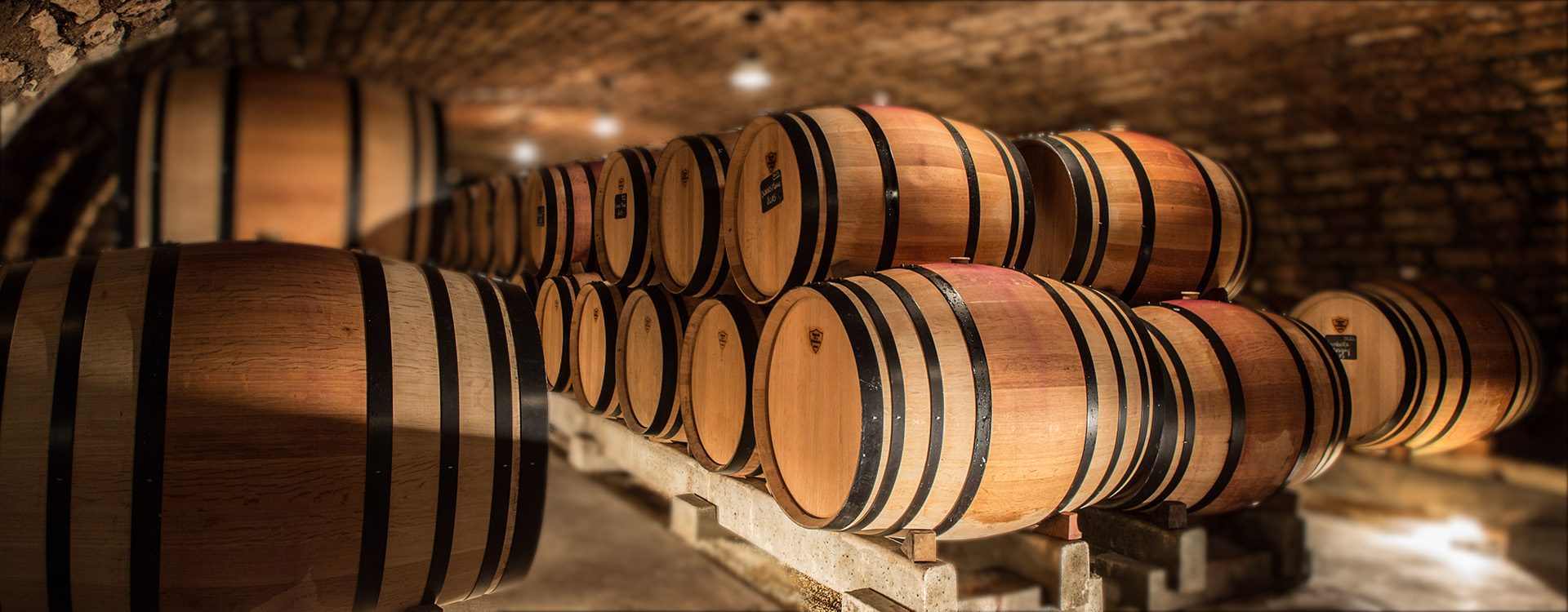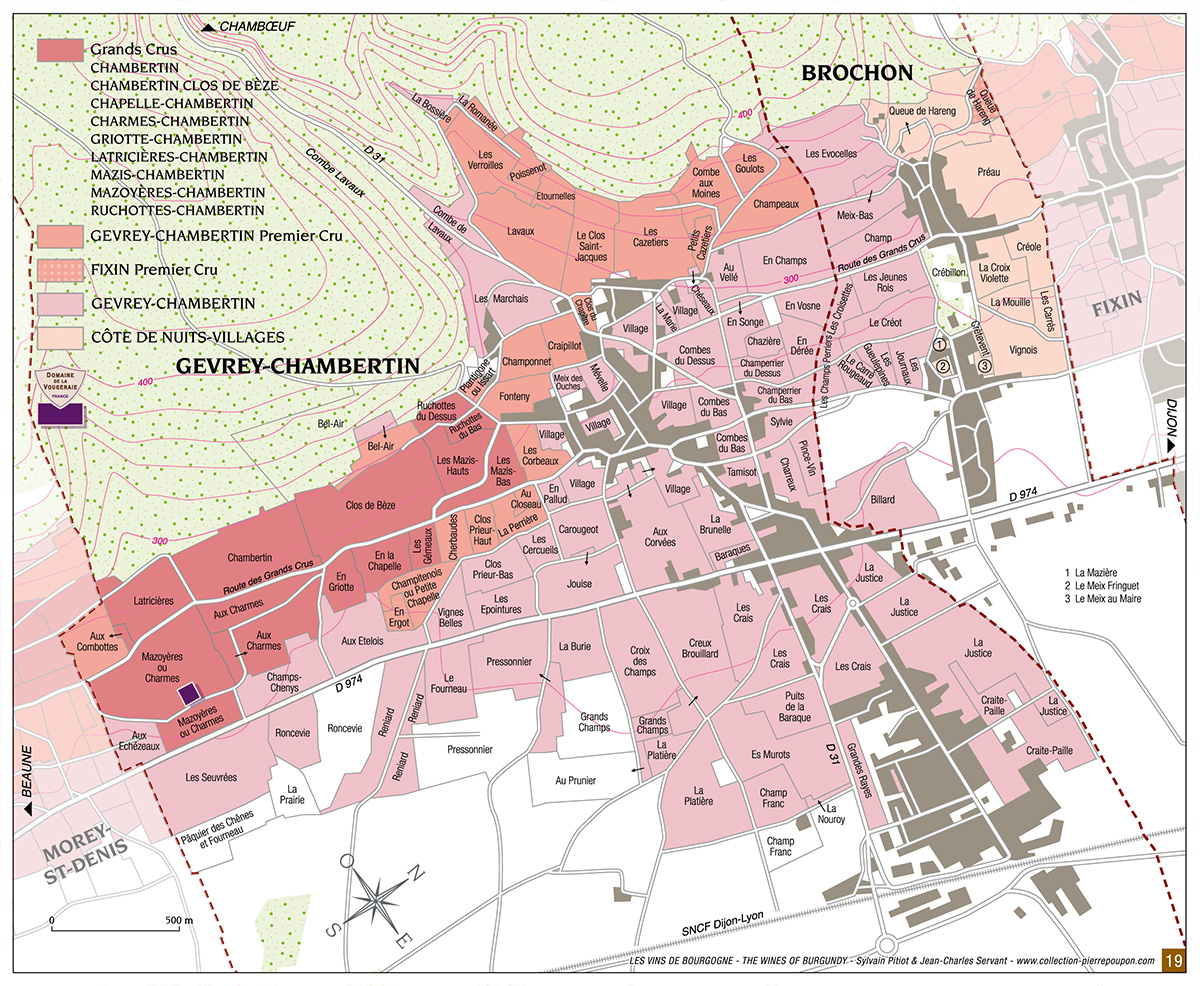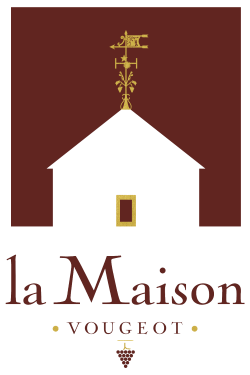The name Les Mazoyères comes from an old word for huts or small houses. The same is true of Les Mazis-Chambertin where a few small dwellings were once found. Les Charmes, on the other hand, is derived from the old chaume, a field or vineyard lying fallow. How times have changed!
Seven Grands Crus preside majestically over these vines, sharing in the glory of Chambertin and Chambertin-Clos de Bèze. Of the seven, Les Charmes-Chambertin and Les Mazoyères-Chambertin, just across the Route des Grands Crus from Chambertin, are climats renowned since the Middle Ages. These appellations precede the AOC system, and were created by decrees in 1931 and 1932.
The history of these climats is inseparable from Chambertin, long considered as “the greatest possible Burgundy”. It was found in the royal cellars at Versailles, and was the only wine Napoleon would drink. It was also the first Burgundy served at the White House, when Thomas Jefferson ordered 100 dozen bottles of “Burgundy of Chambertin”. As Athos says in the Three Musketeers, “Be philosophers, as I am, gentlemen; sit down at the table, and let us drink; nothing makes the future look so bright as surveying it through a glass of Chambertin”.
The illustrious Burgundy author Gaston Roupnel owned a part of this climat, and extolled the wine’s virtues with his inimitable style.
Technical sheet
The appellation
Family ties are strong in Burgundy, especially when royalty is involved! As well as Chambertin and Chambertin-Clos de Bèze, the Chambertin family includes La Chapelle and La Griotte, Les Mazis and Les Ruchottes, Les Latricières, Les Charmes and this Grand Cru, with its unique right to bear three different names: Mazoyères-Chambertin, Mazoyères and Charmes-Chambertin. A true sign of its charm!

The vine
Surface:
Exposure: East-facing.
Plantings: 1901/1902

Grape variety: 100% Pinot Noir
Soil and subsoil: the mineral fraction is particularly varied, with a mixture of pure silt, clayey silt and deep clay. The bottom of the parcel is slightly calcareous, the top not at all.
Planting density: 10 000 vines/ha
Rootstock: massal selection only.
Organic agriculture: since 1998. Received official approval ECOCERT® in 1999. Bio-dynamic agriculture since the 2001 campaign.
Training style: Guyot
Vineyard news: Ullage planted out. Earthing-up of the vines in winter. Spraying of nettle and rhubarb, horsetail, yarrow, tansy, comfrey tea during each treatment. Biodynamic preparation of 500 and 501 at the end of the winter and of
The wine
Harvest date: September 16th and 17th, 2019 (root day).
Hand-sorted in the vineyard and on arrival in the winery.
Yield: 18.6 hl / ha
100 % of whole grapes, not crushed and vatted by gravity.
No yeast addition.
Maceration: pre-fermentation, cold (12-
Maceration: 24 days.
Cap-punched once
Length: 18 months in oak-barrels.
New barrels: 30 %
Origin of woods: Tronçais, Cîteaux
All barrels racked. Light and soft filtration. No fining.
February 8th, 2021 for magnums (fruit day)
February 11th, 2021 (root day).
Limited to 1637 bottles, 48 magnums.


Family Domaine at the heart of Burgundy
Contact us
7bis, rue de l’Eglise
21700 Premeaux Prissey
France
 See the pdf version
See the pdf version